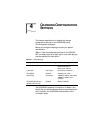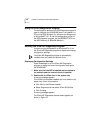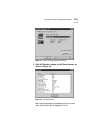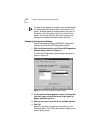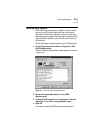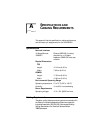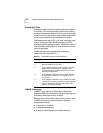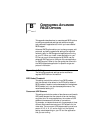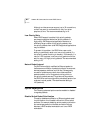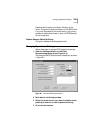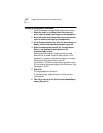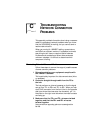
A-2 APPENDIX A: SPECIFICATIONS AND CABLING REQUIREMENTS
Twisted-Pair Cable
Twisted-pair cable consists of copper wires surrounded by
an insulator. Two wires are twisted together (the twisting
prevents interference problems) to form a pair, and the pair
forms a circuit that can transmit data. A cable is a bundle of
one or more twisted pairs surrounded by an insulator.
Unshielded twisted pair (UTP) is the most commonly used
type of twisted-pair cable. Shielded twisted pair (STP)
provides protection against crosstalk. Twisted-pair cable is
now commonly used in Ethernet, Fast Ethernet, and other
network topologies.
The EIA/TIA defines five categories of unshielded
twisted-pair cable (see Table A-1).
10BASE-T Operation
10BASE-T is the Institute of Electrical and Electronics
Engineers (IEEE) 802.3 standard for Ethernet signaling over
unshielded twisted-pair wire at 10 Mbps.
Ethernet, as the most widely used network protocol, uses
10BASE-T as its primary cabling scheme. Ethernet’s
characteristics include:
■ A data rate of 10 Mbps
■ A broadcast architecture
■ A specific media-access control (MAC) scheme
Table A-1 Unshielded Twisted-pair Cable Categories
Category Use
1 Traditional telephone cable.
2 Data transmissions up to 4 MHz.
3 Voice and data transmission up to 25 MHz. The cable
typically has four pairs of wires. Category 3 is the
most common type of installed cable found in older
corporate wiring schemes.
4 Voice and data transmission up to 33 MHz. The cable
normally has four pairs of wire. This grade of UTP is
not common.
5 Voice and data transmission up to 125 MHz. The cable
normally has four pairs of copper wire and three twists
per foot. Category 5 UTP is the most popular cable
used in new installations today.




